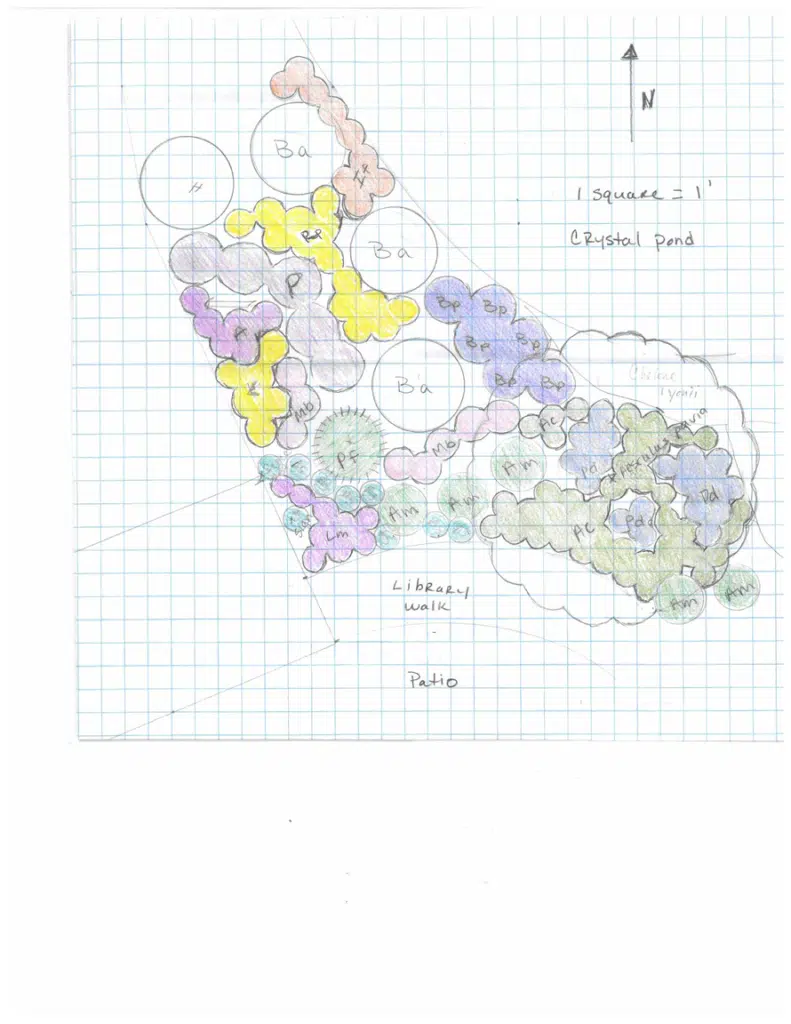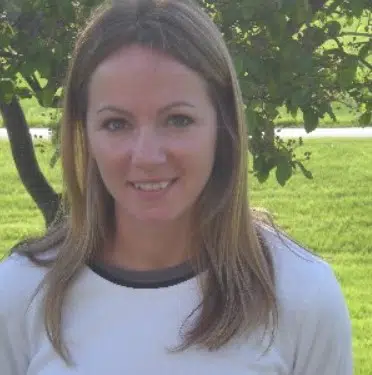
Whenever people ask me about my job as a horticulturist, the number one question is, “So what do you do in the winter?” Well, we do a lot of things. We do winter pruning, clean our tools, attend educational opportunities, but one thing that takes up a lot of time is designing a new bed. Landscape design is really fun. Whether you are designing a large expanse, or just a small redo, the possibilities are endless. Winter is a great time to see the existing structure of the area and the snow gives everything a clean slate.
Observe the Site
Since I have worked in the Butterfly Garden for a while now, I know the space pretty well. But if I know there is an area that needs to be reworked, I try to pay closer attention to the space the season before. It’s a good idea to take lots of pictures. What plants do I already have that I want to keep? What plants need to go? Is it full sun? Or is it slightly shaded? (Not much shade in the Butterfly Garden). How steep is the slope? These are questions that can help you make good decisions when choosing what plants to put in your garden. Since this is a butterfly garden, I need to choose plants that will also benefit butterflies and other pollinators. Plants that will be a good source of nectar or be a host plant for caterpillars. Most of the soil in the garden has been amended and since we leave a lot of the plant material in the garden, the soil is rich in organic matter. Some areas closer to the pond edges, however, can be a little heavier and wet. Soil is also something to take into consideration when observing the site.

Take Measurements
Taking measurements of the site is important to get an accurate idea of how much space you must work with. A measuring wheel or tape measure works well for taking measurements on site. In this rough sketch you can take note of things like rocks, sign locations, and existing plants. Once back inside, I like to plot out my measurements on graph paper to create a bed. Using an engineering ruler, you can measure things out to scale. This makes sure plant sizes are accurate, so you know how many to buy.
Research Plants
So now that I know how much space I have and what my cultural conditions are I can start deciding what plants I would like to have. This is where things can get out of hand. With so many plants to choose from it is easy to get carried away. It’s a good idea to really look at the different colors and textures and flower shapes when deciding what plants to choose. When gardening for pollinators it is also important to choose plants that bloom continually. That way there is always food available for pollinators. I like to keep a list of plants that I think will work with the site and then narrow it down as I go. It is also a good idea to have a substitution list of plants to use if for some reason the plant you want is not available. There are a lot of great websites out there that will let you filter your specifications and only show you plants that are good for your site. Some websites I like to use are listed below:
https://www.missouribotanicalgarden.org/PlantFinder/PlantFinderDetails.aspx?taxonid=276791
Check Availability
When ordering plants online it is good to check their availability. The worst is drawing out your design and finding out that the plants you want are sold out.
Inquire About Neonics (neonicotinoids)
One thing to check when ordering plants is the nursery’s neonic policy. Neonics are a group of pesticides that are closely related to nicotine. Nurseries use them to deter piercing, sucking insects. The problem with neonics, though, is that they are systemic. The chemical is absorbed in the plant tissue so any insect, even beneficial insects are killed. Neonics have been found in a flower’s nectar and pollen and are believed to remain present for years. Neonic-free plants are available. It might just take a little extra effort to find them, but the pollinators will thank you for it.
Plot Plants
Using a circle template, I plot out which plants I want and where I want them. I like to use tracing paper first so if I make a mistake or change my mind about something I don’t have to erase it from the original drawing. When creating a design, it is best to use the mature size of the plant. This way you will know how much space to give it when planting. Adding the initials of each plant to the drawing and the plant list will help to locate each species in the drawing. Finally, I like to use colored pencils to shade in circles. It’s a good way to see how the different colored plants will go together.

9 Appalachian blazing star (Lm) Liatris microcephala
5 black chokeberry (Am) Aronia melanocarpa ‘Low Scape Mound’
6 blue paradise garden phlox (Bp) Phlox paniculata ‘Blue Paradise’
9 copper iris (If) Iris fulva
8 Eastern bee balm (Mb) Monarda bradburiana
14 greyheaded coneflower (Rp) Ratibida pinnata
6ornamental onion (A) Allium ‘Millenium’
6 shasta daisy (L) Leucanthemum x superbum ‘Real Sunbeam’
5 Russian sage (P) Perovskia atriplicifolia
3 white false indigo (Ba) Baptisia alba
32 wild ginger (Ac) Asarum canadense
9 wormwood (As) Artemesia schmitiana ‘Silver Mound’
Happy Designing!

Lori Gogolin
Horticulturist
Lori Gogolin has been a horticulturist for Holden Forests and Gardens since 2010. She creates and manages healthy habitats for plants and pollinators in the Arlene and Arthur S. Holden Jr. Butterfly Garden. Lori has a degree in horticulture from Kent State University.












